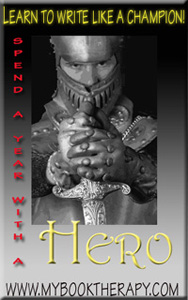When the readers/viewers
understand the rules of the world, regardless of how far-fetched...
A Review of Jumper
I admit it; I went to see the
movie Jumper because I have four teenagers, three
of whom are boys. Because the special effects captured every boy’s
wildest dream of being able to transport himself wherever his whims
carried him and the hero was Hayden Christopher (that was for the teen
daughter), I thought we’d have a winner.
Aside from the morally
questionable, unsympathetic hero, David, who uses his brilliant
superpowers not for good, (i.e., saving Katrina victims), but rather to
seduce women, steal money, and live a life of debauchery every mother
would cringe at, the story itself, which I as a writer can’t get past,
drove me crazy with its messiness.
Somewhere in the mess was story
structure. Good Guy (or is he Bad Guy?) David (Christopher),is chased
through the world by Bad Guy (or is he Good Guy?) Paladin Roland
(played by Samuel L. Jackson). We know David’s motivation has to be to
stay alive and to win the girl’s heart (played by Rachel Bilson), after
all, it is a teen movie. But he too easily wins her affections, so it
can’t be a romance. And then there’s that mystery about his mother, and
why she abandoned him at age five…
But those aren’t the biggest
issues. I could probably sit back, numb myself with some popcorn and a
giant soda if it weren’t for that fact that, well …I was confused.
Regardless of where the story
takes place—in the streets of historical London, or Tatooine, the
forest of Middle Earth, or the dark alleys of Gotham, we need to know
the rules of the world in which our hero lives. Constructing Story
World is about details, and making the fictional world breathe. But
when constructing such a world, if it’s an unfamiliar world, the
reader/viewer needs to know what can and can’t happen. Can trees talk?
Can they walk? Which trees? (If you read Tolkien, you know the
difference). What can destroy the Death Star and why? (Thank you,
George) When the readers/viewers understand the rules of the world,
regardless of how far-fetched, they can move inside it and lose
themselves in the fictional dream.
What are these rules?
Let’s take a closer look at Jumper.
David gets his magical powers to
jump when he’s about fifteen, when his life is threatened. He’s
drowning. And suddenly, he’s not. He’s in a library. Why the library?
What triggered the jump?
|
Great questions, and we’re at
the edge of our
seats waiting for answer that never comes. Rule #1:
Tell us how and why the hero
got his magic powers. Even if in “real world” –and the hero is a
world-renowned sculptor, tell us where he studies and how he achieved
his talent. Just a little clarity will help us believe.
After a little honing of these
mysterious skills, David becomes a playboy with seemingly no
consequences to his actions. This mother was actually a little relieved
when Paladin Roland (Jackson) showed up with his Discipliner, the
Mother of all Tazers. Which brings us to Rule #2:
What are the hero’s limitations? His weaknesses? What foils him? Every
hero has to have a weakness, a glitch in his abilities. The Terrifying
Tazer helps, and later we discover that electricity binds David, but
some hint of this at the beginning would have helped resolve the panic.
So poor David is chased around
the world and meets another Jumper who knows this evil Paladin well. We
begin to care a little bit (frankly, Roland is a bit terrifying), but
we’re left wondering . . . why? So what if David is a playboy. And a
thief. He’s not a serial killer. He’s not going to destroy the
space-time continuum or the fabric of the earth (although he does some
structural damage every time he lands). Why does Roland want to kill
him? (I don’t buy the, “No one but God should have this power” bit;
after all, Roland is trying to, uh, kill David.
Another ideally, God-only power. Can anyone say, “Hypocrisy”?) Rule
#3 is: ’Splain, please. What’s the big deal? Draw us a
picture of what could happen if you don’t take out
the Death Star, or if you don’t kill David. We want a glimpse at the
dark future so we can get behind the, uh Good Guys? (See, I told you
I’m confused).
These are not hard rules: How?
What? Why? They frame the story for us, allowing us play freely on the
playground of the imagination. They keep us from jumping out of our
seats and running out for more popcorn. (And maybe the movie next
door.) Supposedly these questions will be answered in the sequel.
Yeah, let me know if they do.

|